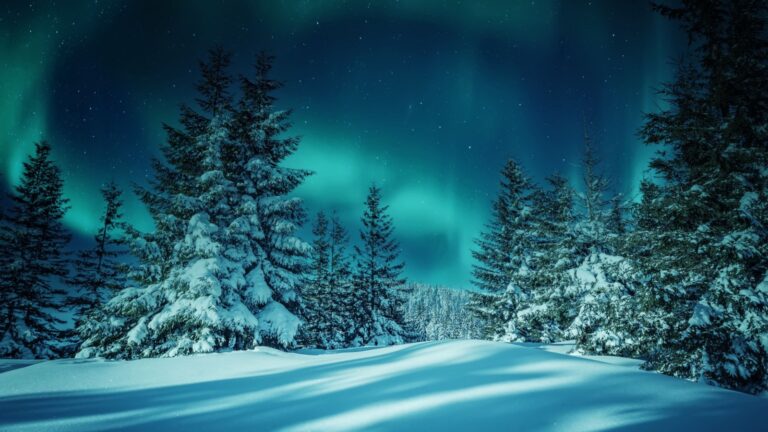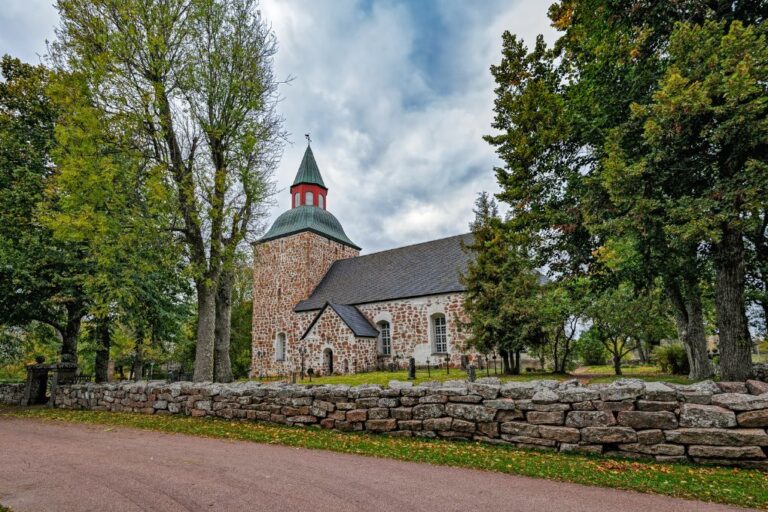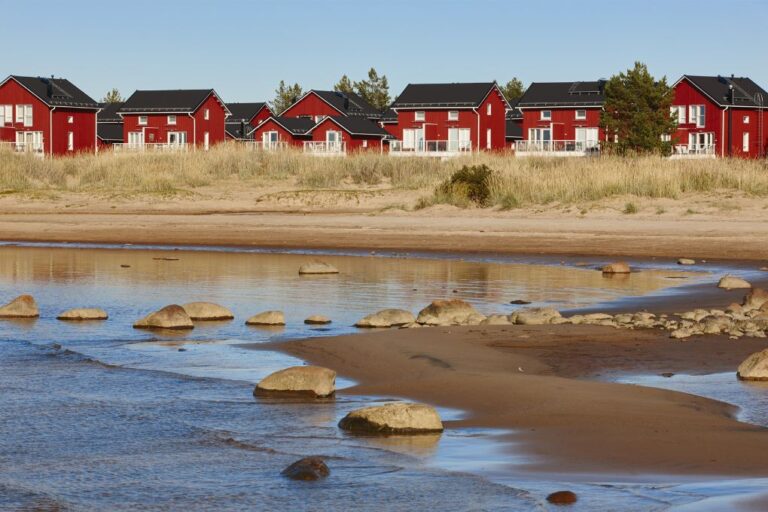Finland may not be the first place you think of when it comes to Vikings, but its rich Viking-era history—marked by trade, cultural exchanges, and hidden treasures—offers a fascinating, lesser-known glimpse into the Nordic past.
When thinking of the Viking Age, images of rugged Norwegian fjords, Danish coastal settlements, and the windswept shores of Iceland or Sweden come to mind. However, one country that doesn’t often make it to the top of that list is Finland.

Tucked away to the east of its Nordic neighbours, Finland’s Viking connections are lesser known but equally captivating.
Though the Finns themselves were not traditionally Vikings, their lands were significantly shaped by the influence of their Scandinavian counterparts during the 8th to 11th centuries.
In Finland, the Viking Age wasn’t just about raids and seafaring; it was also a time of trade, cultural exchange, and, at times, conflict.
Finland Travel Resources: Hotel Bookings – Travel Insurance – Car Rental in Helsinki – Helsinki Tours & Experiences
The coastal regions of Finland, especially those close to the lucrative maritime routes, were deeply integrated into the Viking world. Here’s how you can explore Finland’s Viking past and unravel the hidden stories of this under-appreciated Viking frontier.
A Unique Influence on the Viking Map
Finland’s strategic location made it a key player during the Viking Age, even if it didn’t produce Viking warriors in the traditional sense.
Situated on the trade routes leading east towards Russia, the land was an important source of furs, a valuable commodity in the Viking economy.
While Viking raids weren't a common occurrence in Finnish history, the culture and commerce of the time intertwined with Viking activity. Traders, explorers, and occasionally raiders from the Norse world left their mark on Finnish shores.
So, what can a visit to Finland offer those curious about its Viking heritage? A surprisingly rich variety of sites, artefacts, and historical stories that make it an ideal destination for those wishing to explore the less obvious corners of Viking history.
Start at the National Museum of Finland
Start your journey into Viking Finland in the bustling capital, Helsinki, where the National Museum of Finland serves as a vital hub of historical knowledge.
I say start your jorney, but there's a big caveat with that. At the time of writing, the National Museum is closed for renovations and scheduled to reopen in 2027.

Nevertheless, it's an important part of any Viking-themed trip to Finland, so we're leaving this information here just in case you're thinking of a trip long after we've written this!
This museum offers a sweeping overview of Finland’s early history, and though the Viking Age isn't the central focus, it does make up an important part of the broader context of Finland’s past.
In recent years, the interest in Finland's Viking Age has been rekindled by a series of archaeological discoveries, including treasure hoards. Some of these hoards contain coins and artefacts dating to the Viking Age, shedding light on Finland's role in long-distance trade networks.
These finds, including intricate jewellery and silver coins, hint at Finland’s deep connections to Viking commerce, with routes extending from the Baltic Sea to the far reaches of the Arab world.
Åland Islands: A Viking Trade Hub
For a closer connection to the Viking trade routes, head to the Åland Islands, a scenic archipelago halfway between Sweden and Finland. Today, these islands are known for their picturesque landscapes, perfect for summer cycling tours and quiet retreats.
But back during the Viking Age, these islands were a significant hub of maritime trade and a strategic stepping stone between East and West.
The settlement at Kvarnbo on Åland is one of the most intriguing Viking sites in Finland. Archaeologists have unearthed remnants of a large community here, complete with everyday artefacts like tools and household items, alongside more valuable treasures.
The presence of such diverse objects indicates that Kvarnbo was a melting pot of cultures, where Norse traders, Finns, and other groups met to trade goods, negotiate alliances, and sometimes engage in conflict.

If you visit Åland during the summer, don’t miss the annual Saltvik Viking market, a lively event where the past is brought to life with reenactments, crafts, and even a reconstructed Viking ship that takes centre stage.
This market offers a tangible way to experience Viking life as it might have been lived on these remote islands.
Turku: Finland’s Medieval Gateway
Moving westward, Turku stands as one of Finland’s oldest cities and a key location for understanding its medieval past.
Although the Viking Age predates Turku’s grand castle, the city’s history is still intertwined with the legacy of the Vikings, especially through its proximity to the Viking trade routes.
Turku Castle, dating from the 13th century, offers visitors insight into the transition from the Viking Age into Finland's medieval period.
Within its walls, the castle’s museum offers exhibitions that tell the story of how Finland’s position on the edge of Scandinavia and the Baltic Sea allowed it to absorb and influence the changes of the Viking Age.
Not far from Turku lies the Rosala Viking Centre, where Finland’s Viking history comes alive.
This privately owned museum reconstructs a Viking village, complete with longhouses and displays of everyday Viking life. It’s an immersive experience, offering a window into what life may have been like in Finland during the Viking Age.
Hidden Treasures of Hailuoto and Janakkala
Finland’s Viking Age isn’t confined to its southern coastal areas. Deep in the Gulf of Bothnia, the island of Hailuoto has yielded some fascinating finds in recent years.

Silver and bronze artefacts have been discovered here, indicating that even this remote region had connections to Viking trade networks.
In the southwest, the discovery of runic inscriptions has caused quite a stir in scholarly circles. While Finland has yet to reveal any true runestones like those found in Sweden or Denmark, these smaller inscriptions hint at Viking cultural influence.
Perhaps the most extraordinary discovery in recent years occurred at Janakkala in the Häme region, where metal detector enthusiasts stumbled upon a 12th-century warrior’s grave.
The warrior, buried with two swords, conjures up images of Viking warriors from centuries earlier. This find has caused historians to rethink their understanding of Finland’s role in the late Viking and early medieval periods.
Why Viking Finland Deserves a Closer Look
Finland might not be the first country that comes to mind when you think of the Viking Age, but it offers a fascinating glimpse into a part of Nordic history that’s often overlooked.
Finland Travel Resources: Hotel Bookings – Travel Insurance – Car Rental in Helsinki – Helsinki Tours & Experiences
Whether you’re wandering through ancient sites on the Åland Islands, exploring the artefacts at Helsinki’s museums, or stepping back in time at Turku’s medieval market, you’ll find that Finland has a Viking story to tell–one that’s unique and deeply interconnected with the wider Viking world.
For those already familiar with the Viking highlights of Norway, Denmark, or Sweden, a trip to Finland offers a fresh perspective.
It’s an opportunity to explore a lesser-known chapter of the Viking Age, where trade and cultural exchange were just as important as the more famous raids and conquests.
So, if you’re a history enthusiast looking to venture off the beaten path, Viking Finland should definitely be on your list. Have a great trip!

